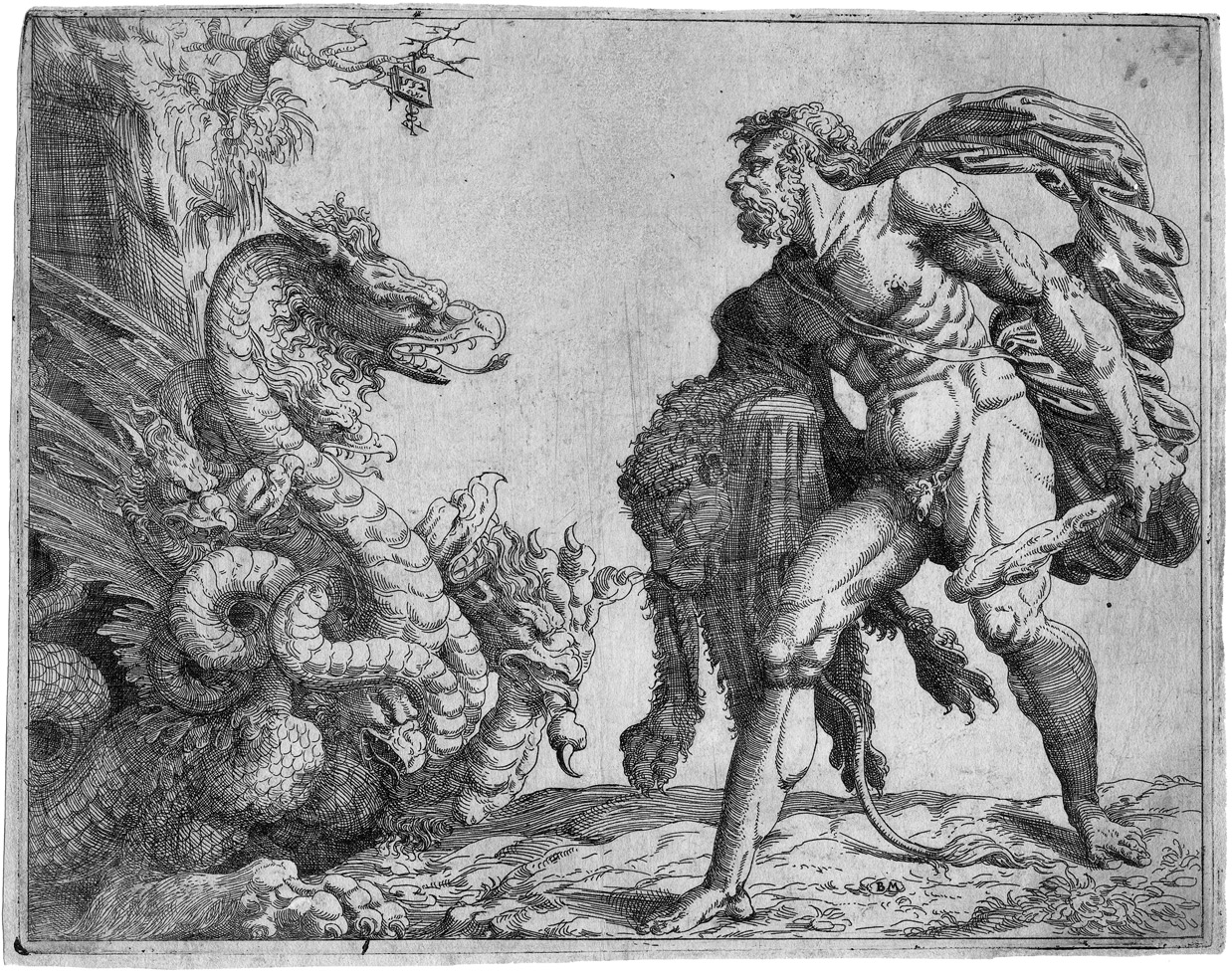Loading the page ...
Giovanni Battista D’Angolo
(called Battista del Moro, circa 1514 Verona – circa 1573 Venice)
Circle of. Hercules and the Lernean Hydra. Etching. 22.7 x 28.9 cm. 1552. Unrecorded.
Although this very lively and suggestively executed print bears the monogram of Battista del Moro (Nagler, Die Monogrammisten, I, 1960) and the date 1552, it is not recorded in any of the descriptive literature. Nagler pointed out that the inventory of Battista’s printed work in Bartsch was far from complete. Although Nagler and Wilhelm Schmidt (Julius Meyer, Allgemeines Künstler-Lexikon, Leipzig 1878, Vol. II, p. 34ff) supplemented the graphic oeuvre with additional prints, they do not include the etching. A further complication is that Battista’s printed work is stylistically far from uniform, which makes a more precise classification of his oeuvre very difficult. It should also be noted that our etching differs markedly from the body of autograph prints by the artist in terms of technical handling and style. The treatment is far more confident, bold and dynamic than in most of Battista’s prints, which sometimes seem a little dry and schematic. On the other hand, Battista’s son, Marco d’Angolo, produced a variant in reverse which is almost identical with our etching both in size and the rendering of the hydra. As Marco’s earliest prints bear the date 1565, it must be assumed that our etching served as a prototype for Marco d’Angolo’s version.
The authorship of this fascinating print has therefore still to be established. Its effects are achieved by sheer visual ferocity. Demonstrating remarkable verve, the artist has depicted a truly fearsome serpent, whose scaly body is twisted in countless coils forming a wild tangle of dangerous claws and dragon heads with bared fangs in order to fend off the attack by Hercules, who strides valiantly and vigorously towards the monster in order to lure it from its lair, every muscle of his strong, sinewy body tensed and ready for a fight to the finish. The cloak fluttering in the wind also reflects the dynamic impetus of combat. The whole is executed in a light, nimble and remarkably ingenious etching technique which uses a large number of hatching patterns of varying density, broken lines and little dots to create a keen sense of texture and shimmering chiaroscuro effects. The small tablet suspended from a branch and bearing the date is a discreet hint that our anonymous etcher must have been familiar with the graphic works of such German masters as Albrecht Altdorfer and Hans Lautensack.
A superb, tonal and differentiated impression with thread margins around the inky platemark. A very skillfully reaired tear in the sky , minor defects, otherwise in very good condition.
Contact us for further information